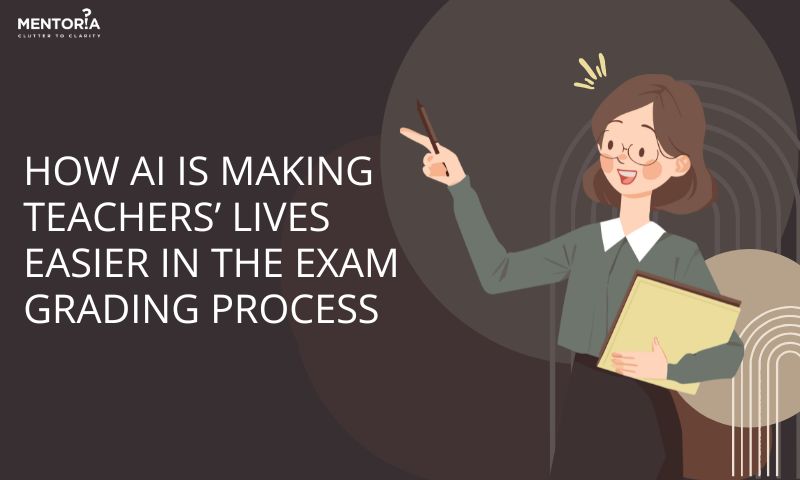10 Innovative Teaching Ideas And Practices For Teachers

Jump to Section
Education has evolved in leaps and bounds over the last few decades. There may have been a time when teachers stuck to textbooks and let the curriculum dictate the year’s lesson plans. However, with the steady rise in technological advancements, information is now available to students in just a few scrolls and clicks on their smartphones, and teachers are no longer their primary source of knowledge. How can you, as a teacher, regain that title and make your lessons interesting and relevant for your students, while also upgrading your own skills to further your career? We’ve got a list of suggestions for you to consider:
Do you think your students need some career guidance? Get in touch with Mentoria’s expert career counsellors to get personalised step-by-step guidance at any stage in their career discovery journey.
1. Revolutionise Your Lesson Plans
Gone are the days when textbooks were your primary tool for teaching. Set them aside for a more technologically sound approach. Use slideshows, documentaries, fact sheets, blogs or e-books to conduct your lessons. Ditch theoretical learning for application-based learning. Recreate real-life situations in your classroom to help your students learn, or take them for field visits to help them get an idea of how the real world works. For instance, instead of simply reading about the United Nations, create a mock UN assembly in your classroom. Give your students enough reading and viewing material to prepare for it, and hold an actual debate to help them understand just how the UN functions. Help them hone soft skills and functional skills that are likely to benefit them in the future.
While textbooks offer adequate information on a particular concept, do your own homework to see how that concept has evolved in today’s scenario. Textbooks aren’t updated as often as the real world changes, so it is important that the knowledge you’re sharing in your classroom is relevant, up-to-date and applicable in today’s scenario. This would require you to put in as much homework as your students – if not more – but it will only help further your own understanding of the concept as well as your students’ learning of the same.
2. Make Learning a Collaborative Process
Teachers today are dealing with Gen Z, a generation that has an attention span of less than eight seconds. Keeping this audience engaged is a daunting task, and simply meting out information to them is not enough to keep them hooked. Make learning a more collaborative effort – ask them to share their opinions, encourage questions and debates, and reward those who show involvement. Ditch your run-of-the-mill multiple-choice tests for opinion-led projects and papers. Get continuous feedback from students on lessons, ask them for suggestions on what they’d like to learn and how they’d like to learn it.
Students often complain about the curriculum not doing enough justice to their learning experience. Try and devote around 20% of your class time to topics that aren’t a part of the curriculum. Look up teaching techniques that have worked for teachers around the world, and pick up the relevant ones to implement within your classroom.
Gen Z is more of a participator or leader than a mere bystander. Use this to your advantage by encouraging learning through discussions. While introducing a new concept in class, give them a defined set of materials to study beforehand and begin the class with an open discussion of their understanding of the concept. Involving students in the teaching process is bound to keep them more engaged in the classroom, and will also help you gain fresh new perspectives on the concept!
Your students can channel their fascination and interest into a career they love! Mentoria’s holistic career assessment test helps students find the right career fit for them based on your unique interests, personality, and ability.
3. Be More Inclusive
You’re talking to a generation that is more ‘woke’ than its predecessors. They live in a diverse, multi-cultural society that is extremely conscious about gender, race, religion, etc. Encourage conversations about inclusivity in your classroom, while ensuring that your lessons remain neutral and inclusive. Students today are quick to call out their elders on issues related to race or gender discrimination – either in person or online. As a teacher, it is up to you to ensure that none of your lessons or assignments promote one gender, race or religion over the other. It is also up to you to accept the fact that your students are never going to be alike – they will have differences in learning methods, opinions, the way they approach the world, or the way they participate in class.
Apart from being inclusive, you also need to advocate for a better world. This would include encouraging your students to pursue social causes that all of you as a group are passionate about. Share the causes you are passionate about with your classroom and find out how your students feel about them. Organise volunteering activities like cleaning the city, planting trees, visits to an orphanage, old age home or animal shelter. You could also organise awareness drives led by your students on local as well as global issues. Today’s generation is well connected to its global peers thanks to technology, so don’t let demographics limit their reach. Not only will this help you give back to society, it will also allow you to mould your students into responsible, moral, socially conscious citizens. Your students are bound to look back at this opportunity and thank you for it!
4. Spearhead a Teacher Training Programme
Once you have experimented with different teaching techniques, help your fellow colleagues get acquainted with your best practices! You could lead the teacher training programme in your school and help your fellow teachers make their lesson plans as engaging as yours. Together, you could revolutionise the way lessons are taught in your school and, eventually, spread word of your methods among the teaching fraternity in your city!
We’re no longer in an age where teachers can simply teach out of textbooks; remember that you are teaching children at the end of the day and not ‘concepts’. Just like marketers keep their target audience at the forefront of all strategies, you need to place your students’ needs above everything else while planning your lessons.
5. Guide Your Students Towards the Right Future
Apart from dealing with academic and social pressures, your high school students have another critical battle to face – choosing the right career. They have over 12000 options to choose from, and they are going to need all the help they can get to make the right choice. This is where you come in. Given how well you know your students and how they look up to you for trusted guidance, you have the means – and the power – to help them make an informed choice about their future. Enrol for a counsellor training programme with an entity like Mentoria so you help your students make informed, accurate decisions about their future careers.
As long as there are students, there will always be a need for teachers. However, upskilling gives you the opportunity to stand out from the crowd, hone your skills to further your career and go beyond educating your students in helping them become better citizens.
Are your students hungry for knowledge? Check out Mentoria’s Knowledge Gateway! We’ve got a career library full of tips and advice as well as webinars from industry professionals. Sign up to Mentoria and get lifetime access to the Knowledge Gateway! Discover more here:
6. Gratify Your with Instant Feedback.
You’re teaching a generation that has become accustomed to instant gratification as a result of advances in technology. They are accustomed to receiving immediate comments on their display photos, poems, or sketches. While it isn’t comparable, it does benefit if you can provide input more quickly. Children cannot easily know what they need to improve on if they do not receive adequate feedback. If at all possible, individualised feedback sessions are advised.
7. Be Relevant to Your Students.
This does not essentially mean speaking in “their” language. It implies that you, as a teacher, must stay current on the internet, technology, and all other current events. This implies that you, like them, have a lot to learn. For relevant video content, subscribe to YouTube channels or join the SWAYAM programme. The Ministry of Human Resource Development of India’s SWAYAM (Study Webs of Active-Learning for Young Aspiring Minds) programme offers online courses taught by faculty from IITs and IIMs. Integrate technology in your lessons so that your classes become something that students look forward to and not run away from.
8. Homework and Research 2.0
New and more innovative teaching strategies, as well as new-age homework assignments and research, go hand in hand. Give your students research assignments that require them to watch instructive videos, especially on topics such as organic chemistry, biology, and physics, rather of relying on textbooks and notes. Videos are easier to grasp, and there are many “related” videos to any topic that will aid in greater understanding. This also allows your students to watch the video as many times as they like and learn at their own speed. Before you teach them in the classrooms, ask them to read about particular terminology and topics so they have a visual reference if you can’t show them a video. As a homework assignment, have them make presentations.
9. Help Destress Them
As a teacher, you are clinically aware of how prepared the students are, or who is capable of what. You are also aware of the stress the students are under when preparing for the boards. You can help them with this.
Manage expectations: Your students need to have realistic expectations from themselves. Sometimes parents put their kids under a lot of pressure by telling them the need to “top”. Closer to the exams, take some time out, and talk to the students about this, reassure them that they just need to do their best.











